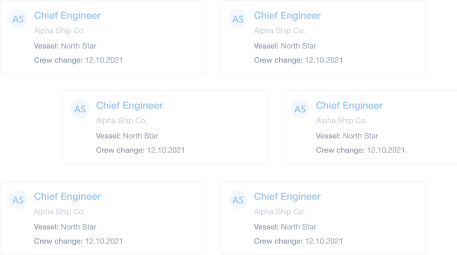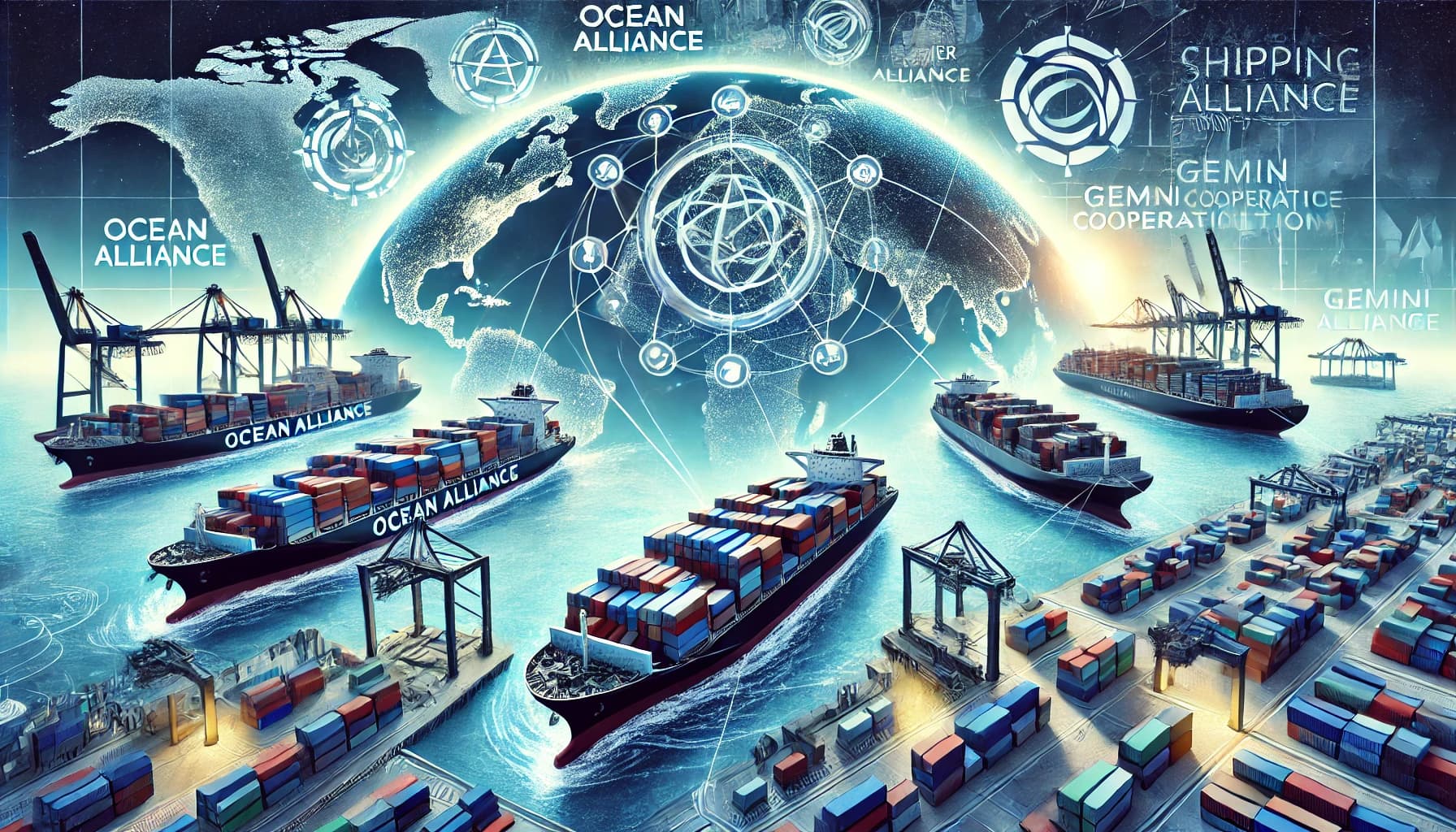Everything You Need to Know About Heavy Lift Vessels
Dec 02, 2021 · 13 mins read ·
Shipping & Vessels
A heavy lift vessel (HLV) is a huge freight ship that has been designed to carry cargo that goes above and beyond the size and weight of the kind of items usually found on a container ship. Think: Dredging equipment, floating dry docks and plants, drilling rigs, offshore structures and even other vessels.
HLVs are the solution to the problem of transporting extremely weighty cargo that is too heavy for regular cargo and container ships.
ARE YOU LOOKING FOR JOBS ON HEAVY LOAD CARRIERS? VIEW MARTIDE’S HEAVY LOAD CARRIER JOBS NOW!
It goes without saying that heavy lift vessels are huge structures - they have to be in order to be able to handle their massive cargoes which can be anything from an oil rig to a damaged warship.
Read more: Everything You Need to Know About Offshore Vessels
But it’s not just size that matters here, structurally they have been designed and built using specialized, innovative advances in ship design and engineering.
First of all we’re going to take a look at the different types of heavy lift vessels.
What are heavy lift vessels and what do they transport?
Broadly speaking there are two main types of HLVs:
- Semi-submersible vessels
- Project cargo carriers
The main difference between these two classifications is the way they load their cargo. Also, within these classifications fall varying types of similar heavy lift vessels and we’ll take a look at these too.
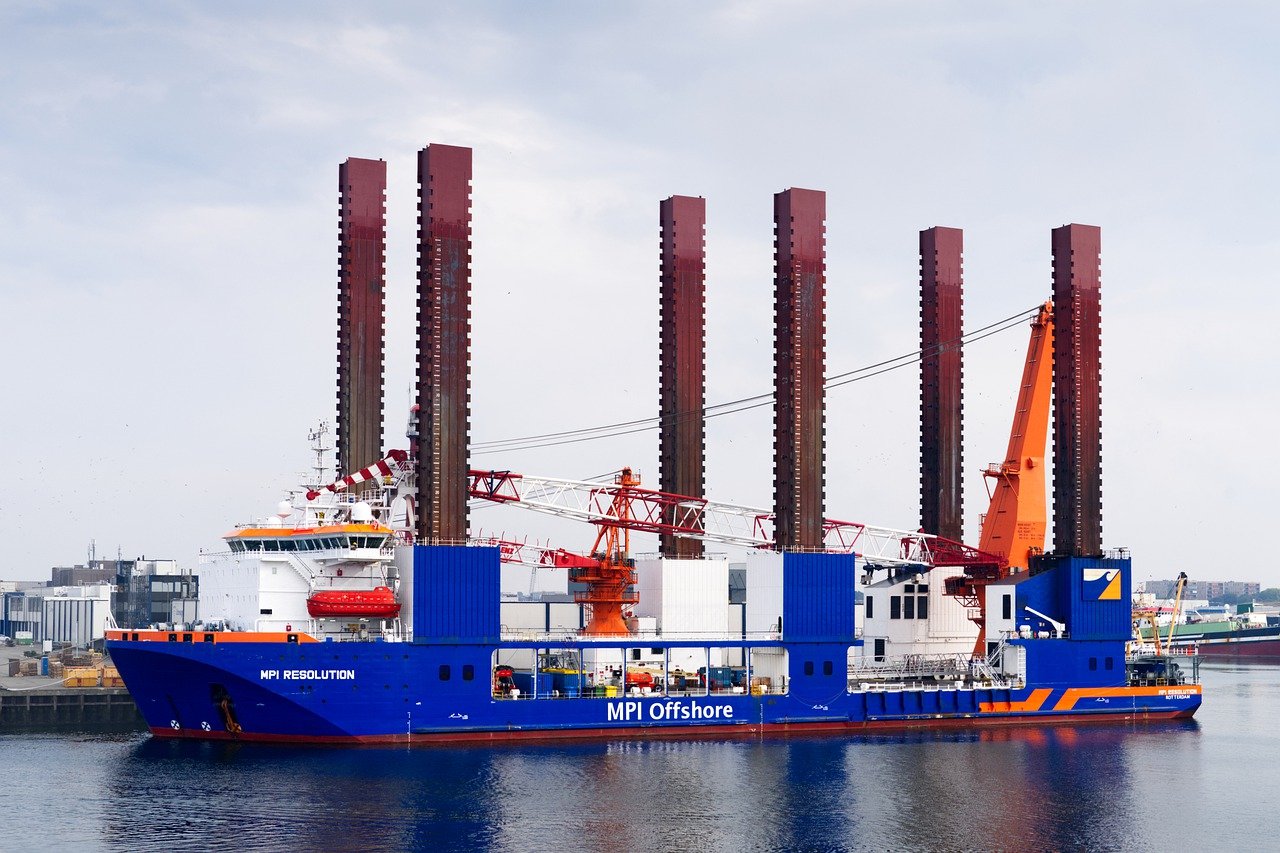
What is a semi-submersible heavy lift vessel?
These vessels are also known as flo/flo or float-on/float-off ships - similar to the principle used by passenger ferries that carry vehicles and ro/ro, RoRo or roll-on/roll-off ships which are predominantly used as car carriers.
A semi-submersible HLV uses ballast water to increase its draft. This has the effect of lowering the vessel, submerging the upper deck to a couple of meters below the waterline.
Once done, the cargo can be floated over - usually by being pulled and positioned by barges and tugboats - and onto the submerged deck. When the cargo is in position the tug or barge will be released and the ballast water will then be pumped out.
Read more: Everything You Need to Know About Mining Ships
However, as its name suggests, the semi-submersible vessel only rises slightly above the waterline and not completely out of the water.
If the ship was completely above water it would place too much strain on the structure. This partial submerging means the cargo is securely located on the deck however no water will be taken onboard and the HLV is able to begin her journey.
What type of cargo do semi-submersible vessels carry?
There are a number of distinct types of freight that float-on/float off ships are used to transport.
- Dredging equipment
- Drill rigs
- Oil rigs
- Floating factories
- Oil processing plants
- Floating dry docks
- Offshore structures
- Other vessels
What makes a semi-submersible HLV different to other ships?
A semi-submersible heavy lift vessel has distinct differences when compared to the design, build and construction of what we think of as ‘normal’ cargo ships.
Read more: Everything You Need to Know About Coaster Vessels
One big difference is that on a container ship the superstructure (the big white building rising up out of the deck and the bridge) is generally located more towards midships, while on an HLV they are located at the fore and stern of the ship.
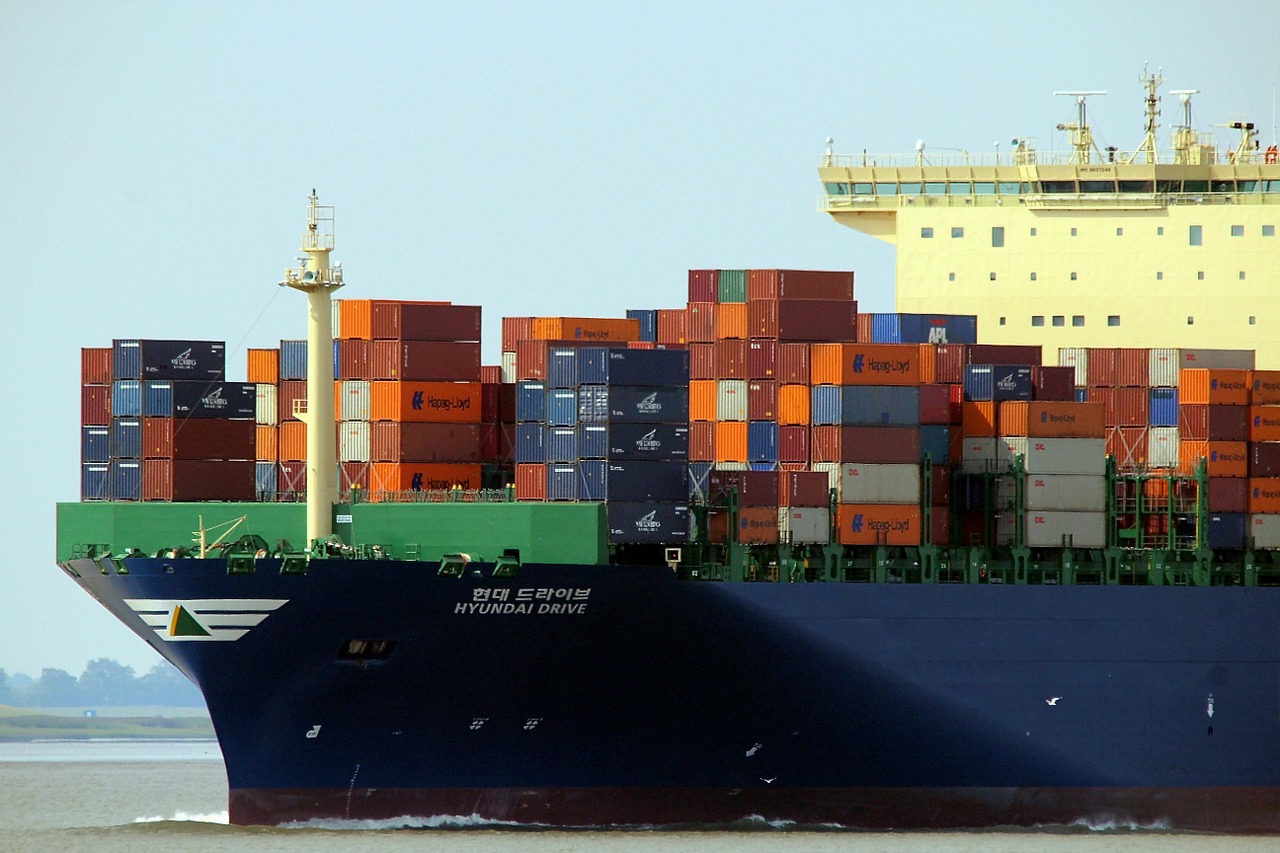
At the stern you will find machinery such as the engines and ballast pumps and at the fore you will find the bridge, crew accommodation, and offices.
ARE YOU LOOKING FOR JOBS ON HEAVY LOAD CARRIERS? VIEW MARTIDE’S HEAVY LOAD CARRIER JOBS NOW!
Placing the bridge at the fore of the ship allows anyone on the bridge a clear view of both the surrounding area and operations such as the loading and unloading of cargo.
In comparison to other ships, the hull of a heavy lift vessel generally has a shorter distance from the upper deck to the keel resulting in a stronger, more robust deck that is able to withstand the weight of its incredibly heavy cargo.
What is a dock ship heavy lift vessel?
A dock ship falls under the category of semi-submersible class HLVs and while they are similar to the semi-submersible vessel we’ve just looked at, they are fitted with side panels on both port and starboard that function as water reservoirs.
Read more: Everything You Need to Know About Cable Laying Ships
The location of the superstructures are also different. Whereas our first semi-submersible vessel had superstructures at the fore and stern, on a dock ship the main superstructure is also to the fore of the ship, however the area at the stern is normally open so that cargo can be loaded and unloaded, or floated on and off, from this direction.
Dock ships are often also equipped with cranes and derricks which help with the lifting and positioning of their huge cargoes.
How does a dock ship load cargo?
The dock ship loads and unloads cargo in pretty much the same way as the semi-submersible vessel: It lowers itself into the water, the cargo is floated on or off, and the ship is lifted back up.
The main difference is that, whilst a dock ship still takes on ballast water to allow it to lower itself into the water, it retains that water once the deck has sunk below the waterline. As you recall, the semi-submersible HLV doesn’t allow the water to remain on deck at this point.
Read more: Everything You Need to Know About Pilot Boats
When the cargo is in place and the barge or tug has disconnected, the water on the deck and the ballast water are quickly removed/pumped out until the ship has again risen to the correct position on the water.
What type of cargo do dock ships carry?
Unlike our previous semi-submersible heavy lift vehicle which carried a whole range of cargo, dock ships are primarily used to carry other vessels, in particular ships that require repair.
Dock ships are often used as an alternative option to a dry dock on land. If a ship is unable to sail due to damage, a land-based dry dock is not a viable option, whereas a dock ship will be because the dock ship can go to them.

Dry docks are also expensive to run, repair and maintain and a dock ship provides an economical substitute.
What is a project cargo carrier heavy lift vessel?
Now to our other type of heavy lift carrier - the project cargo carrier. Unlike our semi-submersible vessels and dock ships, these are not lowered into the water and do not use the float-on/float-off principle of loading and unloading cargo. Instead, cranes are used for loading and unloading operations.
ARE YOU LOOKING FOR JOBS ON HEAVY LOAD CARRIERS? VIEW MARTIDE’S HEAVY LOAD CARRIER JOBS NOW!
However, due to the sheer size, weight and shape of the extraordinary cargo that heavy lift vessels are built for carry, cranes located at ports, and some regular crane vessels, are unable to handle operations.
Read more: Everything You Need to Know About LNG & LPG Tankers
Therefore a project cargo carrier will have its own cranes on deck at the fore and the stern of the ship, and normally on either the port or starboard side.
Design of a project cargo carrier
Because the cranes are usually located on either the port side or the starboard side of the vessel, this can make stability an issue.
The reason the cranes aren’t located on either side of the ship is because that would make it impossible to lift cargo that must be supported at both ends. Therefore ensuring correct ballasting is vital.
The additional weight of the cranes also means that the sides of the hull will need to be more robust than regular cargo and container ships, and even semi-submersible vessels. Depending on the type of project cargo carrier, the cargo itself will either be loaded onto the deck or, more often, into cargo holds below the deck.
Project cargo carriers are also shorter than the other classes of heavy lift vessels, but they more than make up for that with their sheer brute strength!
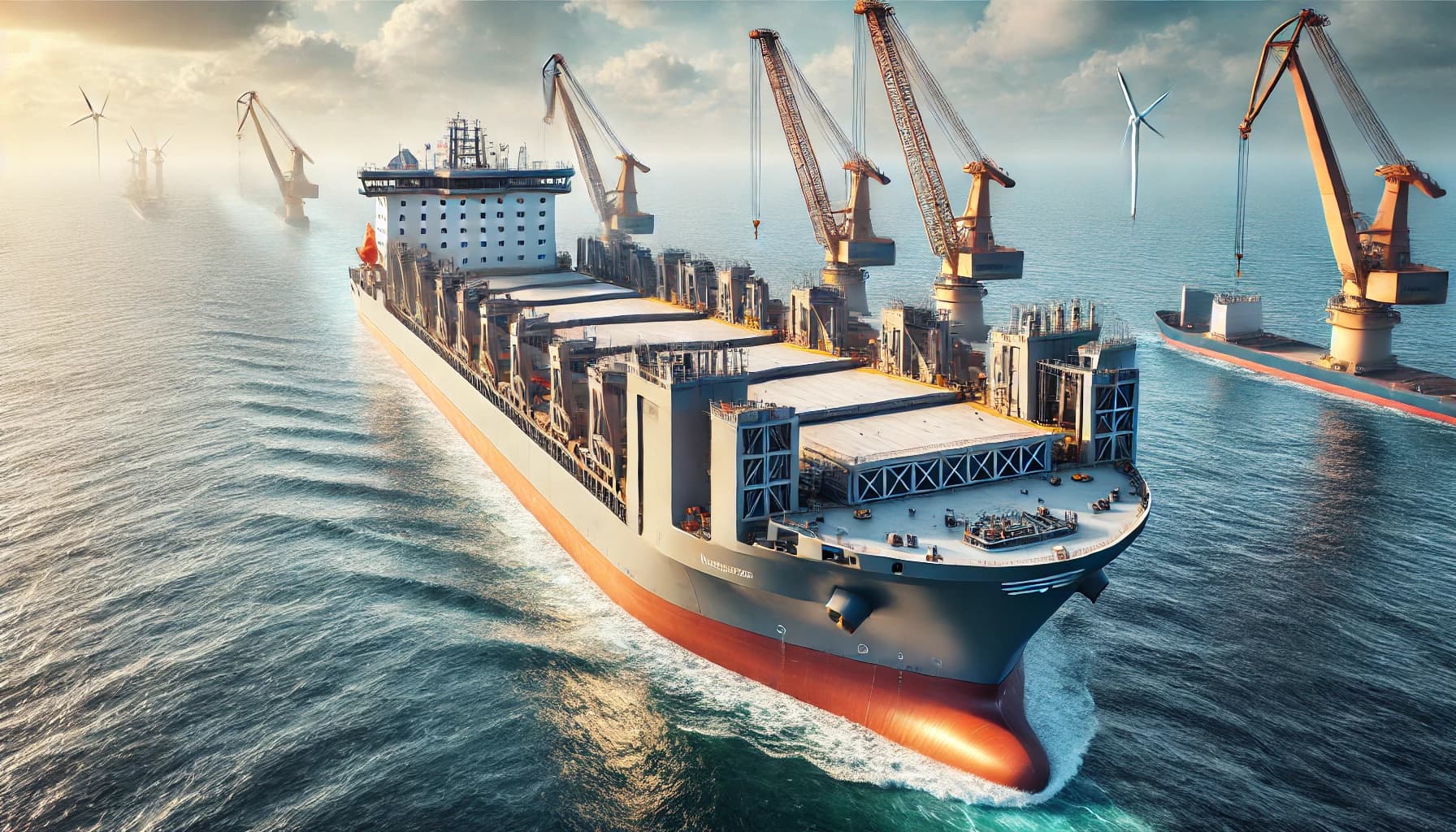
What is project cargo?
You’ve heard of cargo, but what exactly is project cargo? Like the rest of the HLV family, project cargo is heavy, huge and hard to handle! The fact that it is termed ‘project’ is due to the fact that the cargo is normally something that is crucial to a particular project or industry.
For example, project cargo includes:
- Pipelines
- Parts of bridges
- Parts of cranes
- Big automobile parts
- Parts of industrial units
- Other large components
Basically any large parts that are vital to a project in the aerospace, military, engineering, renewable energy, powerplant or petrochemical sectors will be transported, both nationally and internationally, by a project cargo carrier.
What is an open deck cargo ship?
Open deck ships, like project cargo carriers, also use their own cranes on deck to load and unload their freight. However, while cargo cannot be floated on and off, it can be rolled on and off - in a manner similar to RoRo (roll-on/roll-off) ships.
What type of cargo do open deck heavy lift vessels carry?
Due to their dual loading and unloading capabilities - i.e. crane and roll-on/roll-off, open deck cargo ships usually carry:
- Trucks and lorries
- Cranes
- Yachts and other small boats and craft
- Construction equipment
Design of a open deck ship
The open deck ship is a little different in design and construction to the rest of the heavy lift family. For example, unlike semi-submersible HLVs with their fore and stern superstructures, the open deck ship has its superstructure right at the very fore of the vessel.
ARE YOU LOOKING FOR JOBS ON HEAVY LOAD CARRIERS? VIEW MARTIDE’S HEAVY LOAD CARRIER JOBS NOW!
It also doesn’t have any walls, like the dock ship, which means that the open deck ship can transport freight that is wider than the ship itself.
So that wheeled cargo can be driven (or towed) onboard, a ramp is located at the stern of the vessel and some bigger open deck ships might also have smaller ramps on either side so that more than one loading and unloading operations can take place simultaneously.
Want to know more about other types of vessels?
We’ve written a whole series of articles that take a deeper look at different types of boats, ships, vessels and other craft.
Why not take a look at some of them if you'd like to know more about bulk carriers, icebreaker ships, lightships, oil tankers, container feeders, chemical tankers, dredgers, fireboats, gas carrier ships, cruise ships, fishing boats, supramax vessels and more.
And don’t forget to download our seafarer job app for iOS or Android from the Apple App Store or from Google Play either!
Read the previous article in this series: Everything You Need to Know About Lightships
Read the next article in this series: Everything You Need to Know About Oil Tankers

Eve Church
Eve is Martide's content writer, publishing regular posts on everything from our maritime recruitment and crew planning software to life at sea. Eve has been writing professionally for more than two decades, crafting everything from SEO-focused blog posts and website landing pages to magazine articles and corporate whitepapers.
UK

is the only site for maritime jobs
